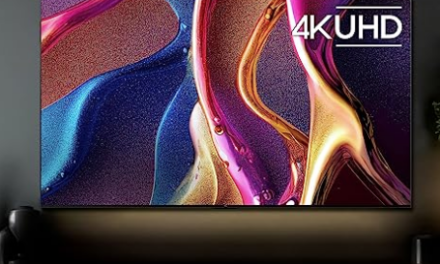Beyond Disruption – How Web3 Could Unlock TV’s Creative Potential
Television as we know it is on the cusp of major disruption from web3 technologies like blockchain, NFTs, and the metaverse. Early signs of this transformation are already emerging through smart TVs gaining crypto features and studios experimenting with web3 models.
In this article, we’ll explore the potentials ways decentralized tech could reshape entertainment – from changing content funding and ownership to reinventing how we watch.
Web3 Capabilities Arrive on Smart TVs
Leading TV manufacturers like LG and Samsung have begun unveiling internet-connected “smart” TV models featuring web3 capabilities:
- NFT wallets and marketplaces to browse and potentially trade blockchain collectibles
- Partnerships with metaverse platforms for easy access to virtual worlds
- Support for digital identity profiles that persist between experiences
While niche for now, manufacturers likely hope these features will resonate with tech-savvy consumers – and also see web3 as a potential growth vector as TV competition heats up.
Web3 as a Path to Mainstream Metaverse Adoption
For metaverse platforms like Oorbit, integrating into smart TVs provides mass reach impossible with just VR/AR headsets. Even a small portion of the over 200 million TVs shipped annually accessing metaverse worlds would mark major progress in mainstream adoption.
Rather than specialized hardware, users could opt into web3 simply through their television and remote. With artist partnerships, immersive concerts, gaming, and more, casual participation may rise – even if many remain passive viewers or only dabble occasionally.
How Studios Are Embracing Web3 Experiments
On the content side, studios are also beginning to run web3 experiments. For example, Fox has greenlit “Krapopolis” – an animated show which sold NFTs granting holders special benefits like voting power. And Gala Games is producing a live-action sci-fi series called “RZR” releasing NFTs related to the IP.
Networks likely hope engaging core fans through NFTs and decentralization results in more passion and activation than traditional models. If successful, expect more shows tailored for web3 participation.
How Web3 Could Reshape TV’s Status Quo
More broadly, web3 presents alternatives to TV’s entrenched norms:
- DAOs potentially fund productions instead of studios
- NFTs fractionalize ownership amongst fans
- Profits flow directly to creators rather than absorbed by networks
- Audiences vote on plot direction rather than executives
Resulting projects could feel radically different – more collaborative and interactive – leaving legacy models behind.
Preserving Our Cultural Legacy
Beyond transforming creation models, web3 offers hope for preserving television history. As highlighted by Blockworks, most early TV recordings have been erased. But decentralized storage like IPFS could securely archive media for posterity. Imagine the entire digitized TV canon immortalized on blockchain.
The Blockchain Entertainment Revolution Is Coming
We’re only glimpsing the beginnings of how decentralized technologies could reshape entertainment. But between tokenized participation, the metaverse, and transformational economics, web3 promises to catalyze creativity.
The next paradigm of more open, transparent, and fractionalized digital content approaches. As web3 and television converge, the results will redefine media for the digital age.















